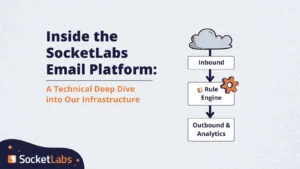Email list hygiene refers to all management practices aimed to protect the deliverability and performance of your email marketing campaigns. It involves removing unresponsive addresses every one to six months, depending on your lead generation strategy.
The result is a quality list and better deliverability.
What is email list hygiene?
Email list hygiene can be any of the following:
- Filtering out duplicated addresses, confirmed fake email addresses, and typos
- Unsubscribing inactive members using up-to-date metrics
- Removing invalid email addresses
- Eliminating sources of hard bounces
- Removing any suspected or confirmed spam traps
Email list cleaning isn’t just about engagement. Sending to the wrong addresses can lower your sender reputation, leading to engaged subscribers missing your emails because contacting inactive subscribers will negatively affect deliverability.
Inactive addresses might not be intentionally ignoring your mail. It’s possible they’ve been routed to spam or a folder the recipient simply doesn’t check. Regardless of the reason, inactive email addresses can cause a sudden drop in open rates after about 120 days, according to many email service providers (ESPs). Email list hygiene best practices are absolutely critical to avoid negative outcomes.
Email list hygiene best practices
Proactively, there are plenty of things an email marketer can do to reduce email hygiene work. Writing engaging emails, collecting qualified leads, and throwing out bad or suspicious addresses can improve your lists with more interested (and real) recipients. The more up-front work done, the longer the list can stay clean.
- Prevent fake email addresses: Email validation can be a really effective step to take. Using a tool or even manually going through lists to identify typos is a starting point, and then further filtering out addresses with bounces can reduce the amount of traps on a list. An easy way to do some of this work proactively is to use double opt-in practices where the recipient has to confirm they’ve received a confirmation email.
- Use re-engagement campaigns for inactive addresses only: Send an email asking for confirmation they’d like to continue receiving your mail after four to six months of inactivity. Follow through with unsubscribing anyone who further ignores the email. It’s better to send these emails only to inactive users, because the default effect could lead more active subscribers to unsubscribe.
- Design better lead collection practices: Unsubscribes erode email deliverability. As mentioned, use double opt-in to better qualify your leads, and provide really valuable benefits to entice people into sharing their real email addresses.
- Avoid batch-and-blast email: Mass sends without personalization or segmentation can lead to spam complaints. Spam complaints increase when sending too many emails.
- Review the email subject line: Optimizing your subject lines can increase engagement, ultimately helping you avoid the spam folder.
Using email list hygiene best practices, like keeping good, engaged email addresses on your lists, can immediately and positively impact your open rates. Over time, your deliverability rates will improve thanks to consistent interaction from subscribers, and further proof you’re simply a good sender!







